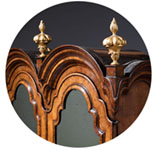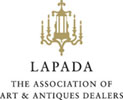Signed Mid 19th C. Edo/Meiji Period Diminutive Lacquer Stacking Cabinet, Japan
£5,800
Follow Us
Signed Mid 19th C. Edo/Meiji Period Diminutive Lacquer Stacking Cabinet, Japan
The highly decorated tray in the form of a table frames a series of three stacking boxes, a further three lidded boxes and a tray concealed within, raised on ogee bracket feet.
This fine lacquer stacking cabinet of gold and black is a variation on a cabinet for incense. It contains small boxes within boxes to hold incense woods and an outer tray in the form of a table with legs.
All of the original eleven components are present.
The opening up of Japan in the mid-1850s after more than two centuries of seclusion from the rest of the world triggered a huge interest in Japanese art and design. Western collectors, artists and designers particularly admired lacquer, for which they had no equivalent.
Further reading: (see last image in gallery)
This stacking cabinet relates closely to an example purchased by the Victoria & Albert Museum at the Paris Exhibition of 1867 (accession number: 875 to J-1869). This and subsequent international exhibitions were largely responsible for introducing Japanese art to the Western public. Lacquerwork formed a central part of the Japanese displays at these exhibitions. Some examples were old, but the majority, like this piece, were new or nearly new. The V&A acquired 20 items of Japanese lacquer work from the Paris Exhibition.
It is plausible that this item was purchased at the Paris Exhibition in 1867.
Condition
Good. Wear consistent with age and use. Good original condition with minor wear in line with age and use.
Dimensions
Height: 12.4 cm (4.89 in)
Width: 13 cm (5.12 in)
Depth: 8.9 cm (3.51 in)
Provenance
Private collection Salisbury
PREVIOUSLY SOLD
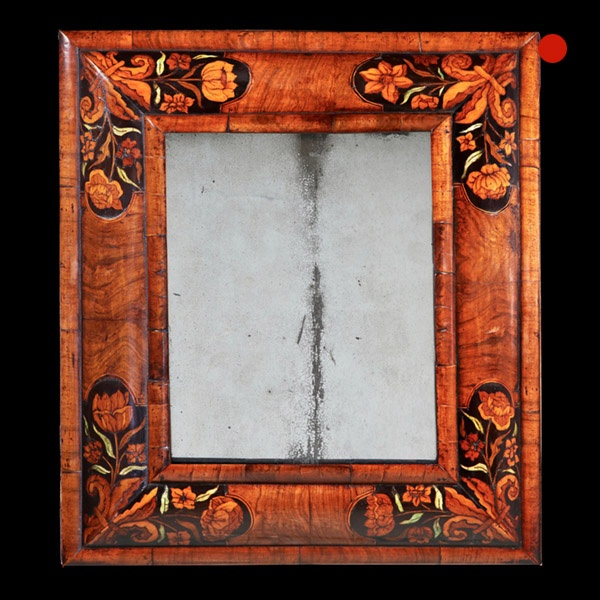
17th Century William and Mary Figured Walnut Marquetry Cushion Mirror
17th Century William and Mary Figured Walnut Marquetry Cushion Mirror SOLD Follow Us17th Century William and Mary Figured Walnut Marquetry Cushion Mirror From the restoration of the British Monarchy (1670-1685) we bring to you this charming...
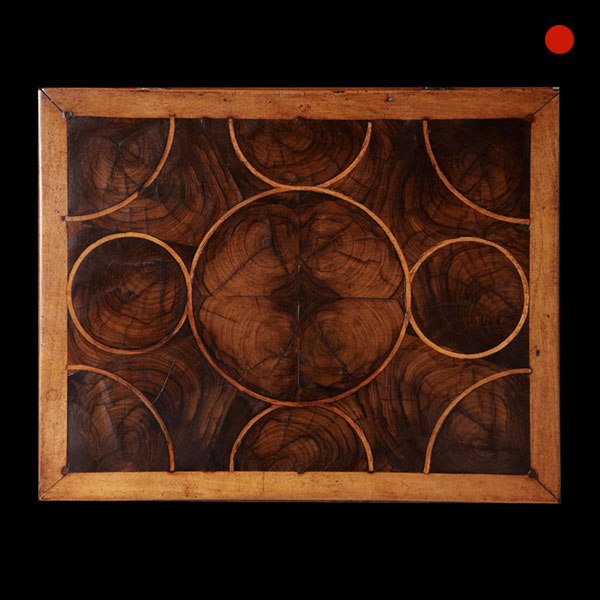
William and Mary Olive Oyster Lace Box
Fabulous 17th-century olive oyster ‘lace box’. ‘Lace boxes’ were popular amongst the middle and higher classes of society from C.1660-1700. The olive oyster box we have for offer here is a lovely original and unusually small example, at just 12″ wide. This form dates from circa 1680-1700.
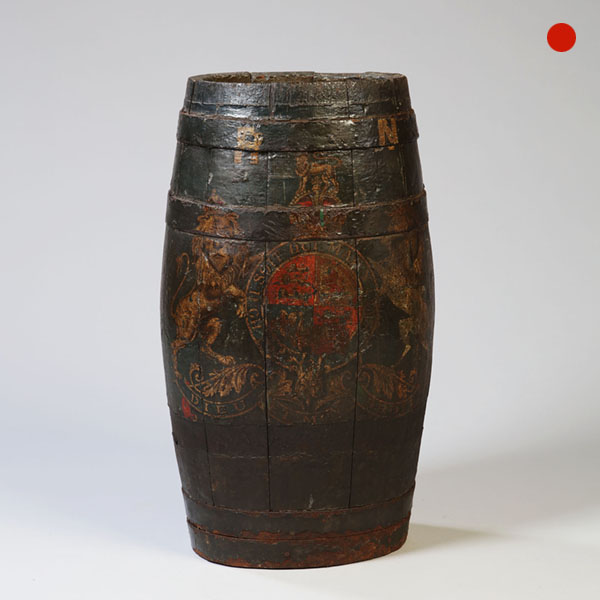
18th-Century Royal Navy Decorated Barrel
A rare 18th-century Royal Navy oak grog or powder barrel, lacquered and decorated with the Royal Coat of Arms. Super piece and makes a fantastic and atmospheric stick/cane stand.
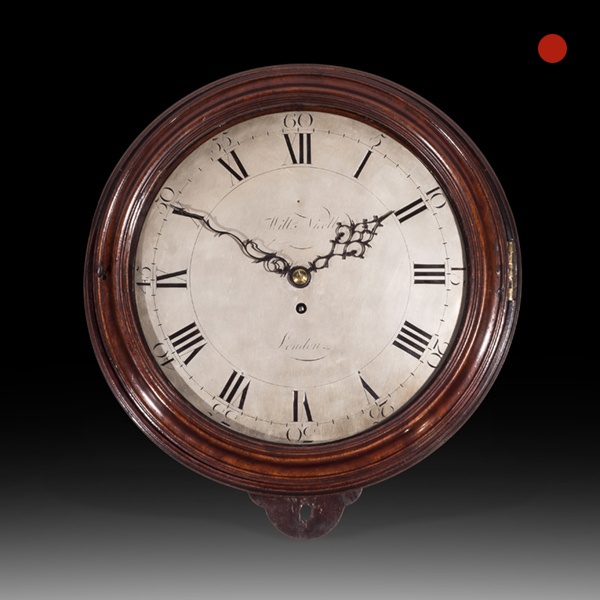
Large Mahogany 18th-Century Dial Clock, William Nicoll, London
The solid mahogany case has a moulded mahogany glazed door, which can be locked on the left-hand side. The original rectangular saltbox is permanently attached to the front and has doors to the side and the bottom.
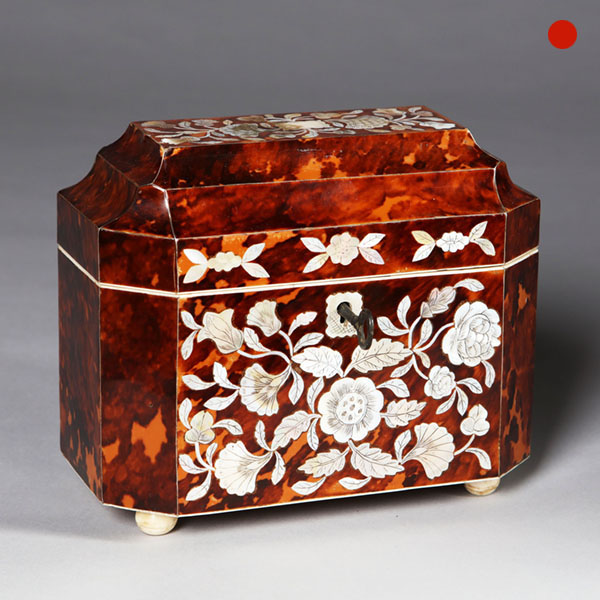
William IV Mother of Pearl Inlaid Tortoiseshell Tea Caddy
William IV Mother of Pearl Inlaid Tortoiseshell Tea Caddy 1800 England SOLDFollow UsWilliam IV Mother of Pearl Inlaid Tortoiseshell Tea Caddy A fine William IV mother of pearl inlaid tortoiseshell tea caddy. The term ‘caddy’ is believed to...
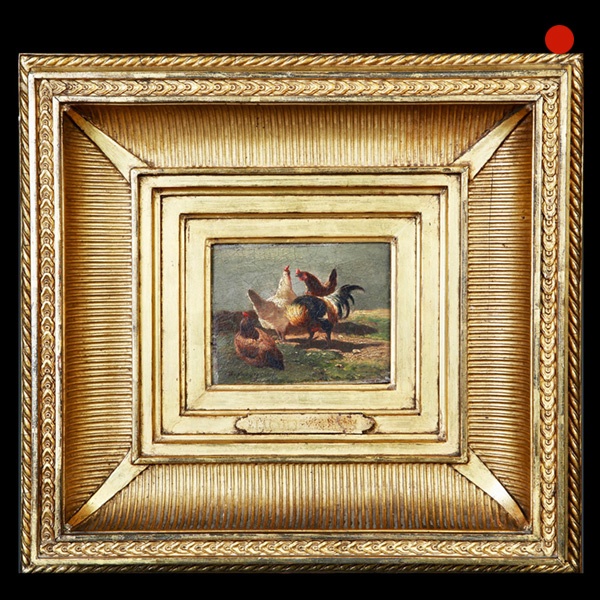
19th-Century Study of a Cockerel and Three Hens Oil Painting on Walnut Panel Charles Emile Jacque (1813-1894)
19th-Century Study of a Cockerel and Three Hens Oil Painting on Walnut Panel Charles Emile Jacque (1813-1894) 1813 to 1894 England SOLDFollow Us19th-Century Study of a Cockerel and Three Hens Oil Painting on Walnut Panel Charles Emile Jacque...

17th Century William and Mary Figured Walnut Marquetry Cushion Mirror
17th Century William and Mary Figured Walnut Marquetry Cushion Mirror SOLD Follow Us17th Century William and Mary Figured Walnut Marquetry Cushion Mirror From the restoration of the British Monarchy (1670-1685) we bring to you this charming...

William and Mary Olive Oyster Lace Box
Fabulous 17th-century olive oyster ‘lace box’. ‘Lace boxes’ were popular amongst the middle and higher classes of society from C.1660-1700. The olive oyster box we have for offer here is a lovely original and unusually small example, at just 12″ wide. This form dates from circa 1680-1700.

18th-Century Royal Navy Decorated Barrel
A rare 18th-century Royal Navy oak grog or powder barrel, lacquered and decorated with the Royal Coat of Arms. Super piece and makes a fantastic and atmospheric stick/cane stand.

Large Mahogany 18th-Century Dial Clock, William Nicoll, London
The solid mahogany case has a moulded mahogany glazed door, which can be locked on the left-hand side. The original rectangular saltbox is permanently attached to the front and has doors to the side and the bottom.

William IV Mother of Pearl Inlaid Tortoiseshell Tea Caddy
William IV Mother of Pearl Inlaid Tortoiseshell Tea Caddy 1800 England SOLDFollow UsWilliam IV Mother of Pearl Inlaid Tortoiseshell Tea Caddy A fine William IV mother of pearl inlaid tortoiseshell tea caddy. The term ‘caddy’ is believed to...

19th-Century Study of a Cockerel and Three Hens Oil Painting on Walnut Panel Charles Emile Jacque (1813-1894)
19th-Century Study of a Cockerel and Three Hens Oil Painting on Walnut Panel Charles Emile Jacque (1813-1894) 1813 to 1894 England SOLDFollow Us19th-Century Study of a Cockerel and Three Hens Oil Painting on Walnut Panel Charles Emile Jacque...
YOU MAY ALSO LIKE
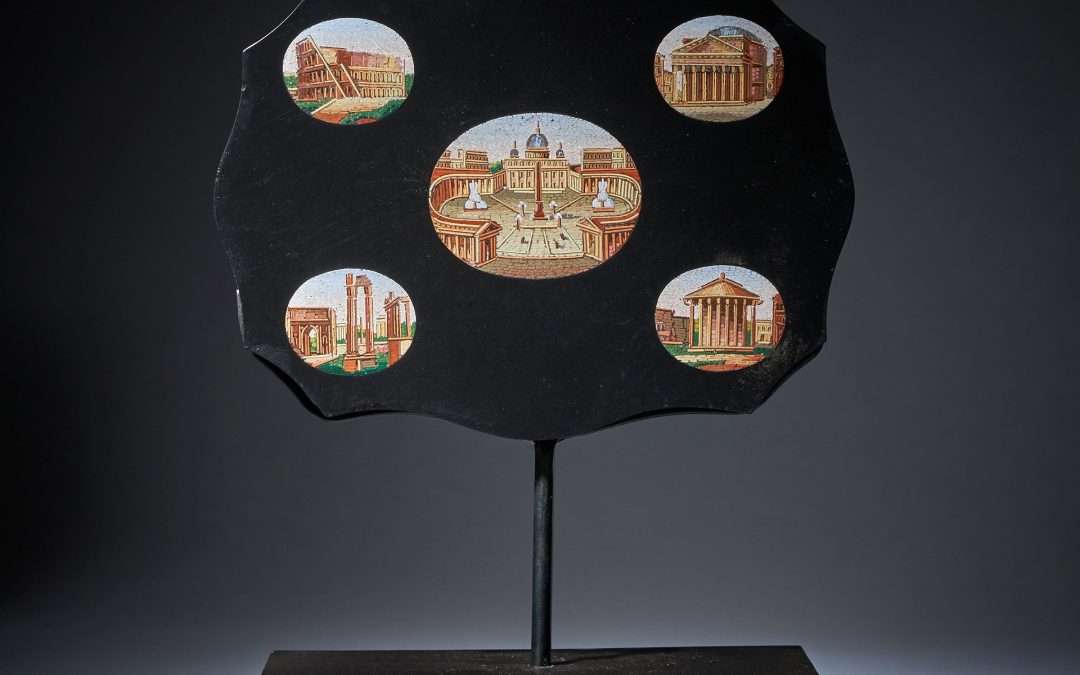
19th Century Grand Tour Micro Mosaic Tablet Depicting Italian Architecture
19th Century Grand Tour Micro Mosaic Tablet Depicting Italian Architecture £3,650Follow Us19th Century Grand Tour Micro Mosaic Tablet Depicting Italian Architecture A fine mid-19th century serpentine grand tour micro mosaic tablet or...
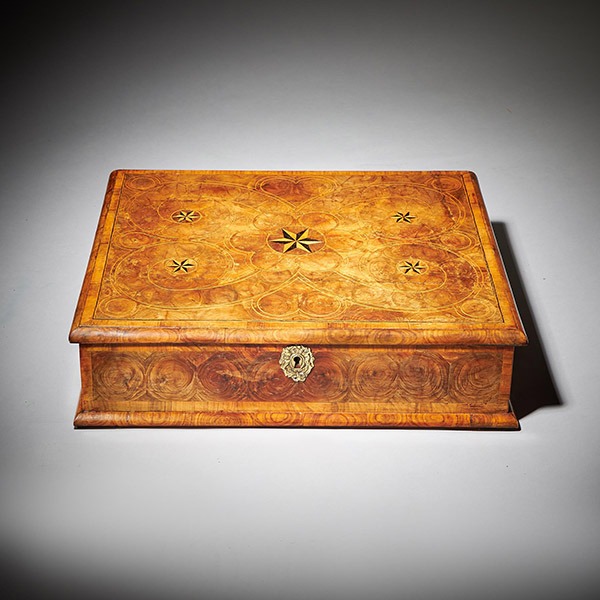
Large William and Mary 17th Century Inlaid Olive Oyster Lace Box, Circa 1690
Large William and Mary 17th Century Inlaid Olive Oyster Lace Box £5,500[wpforms_selector form_id="11387" show_title="on" _builder_version="4.22.1" _module_preset="default" custom_margin="-30px||||false|false" global_colors_info="{}"...
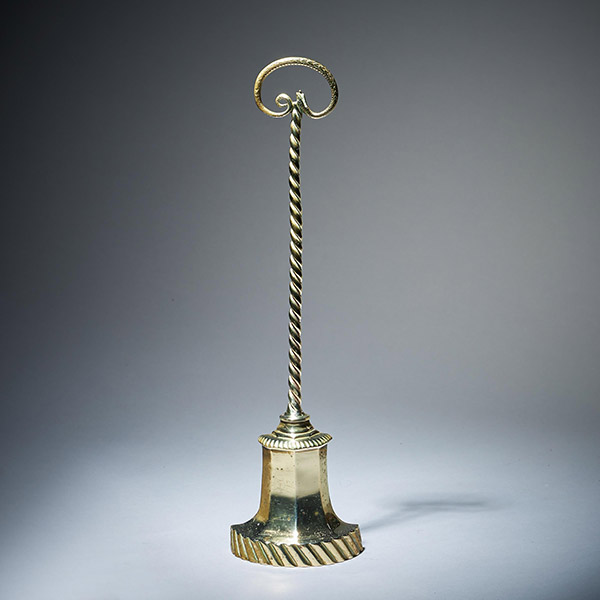
Early 19th Century High Regency Brass Snake Doorstop
Early 19th Century High Regency Brass Snake Doorstop £1,100Follow UsEarly 19th Century High Regency Brass Snake Doorstop A high Regency solid brass bell-shaped doorstop with snake handle, from the reign of George IV, Circa 1770. England The...
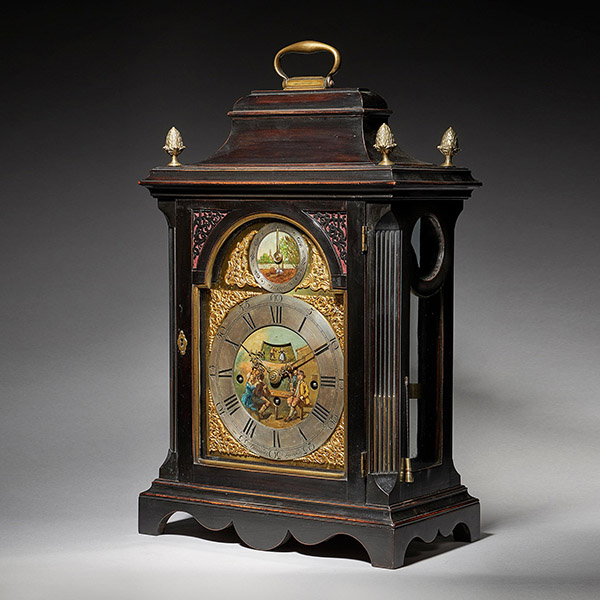
Extremely Rare George III 18th Century Quarter-Striking Bracket Clock, Signed
Extremely Rare George III 18th Century Quarter-Striking Bracket Clock, Signed Follow UsExtremely Rare George III 18th Century Quarter-Striking Bracket Clock, Signed An extremely rare George III 18th century ebonized quarter-striking bracket...
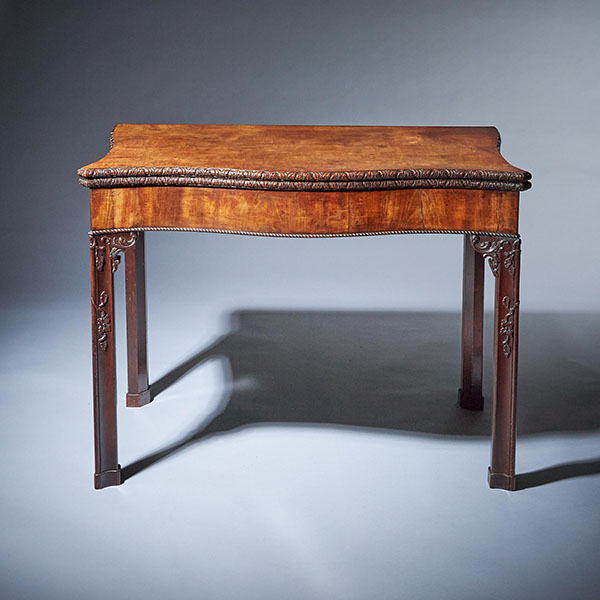
18th Century George III Carved Mahogany Serpentine Concertina Action Card Table
18th Century George III Carved Mahogany Serpentine Concertina Action Card Table £19,800Follow Us18th Century George III Carved Mahogany Serpentine Concertina Action Card Table A bold and impressive George III carved mahogany serpentine...
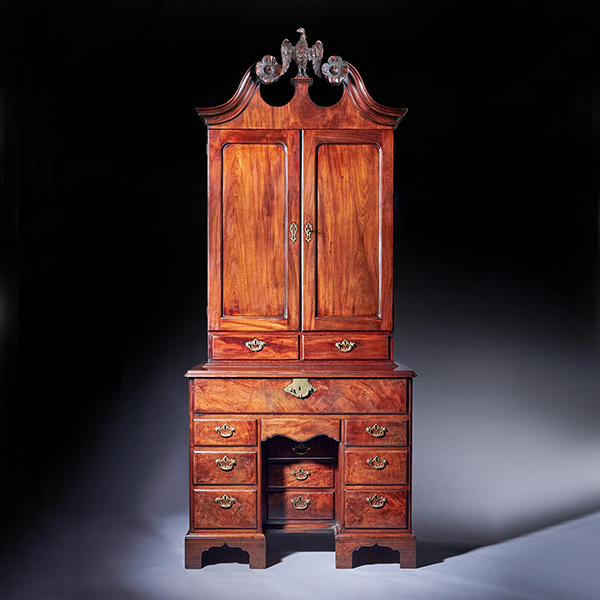
A George II Irish Mahogany Secretaire Kneehole Bookcase Att. C. Hearn
A George II Irish Mahogany Secretaire Kneehole Bookcase Att. C. Hearn £45,900Follow UsA George II Irish Mahogany Secretaire Kneehole Bookcase Att. C. Hearn An original and rare two-part George II 18th century Irish architects figured mahogany...

19th Century Grand Tour Micro Mosaic Tablet Depicting Italian Architecture
19th Century Grand Tour Micro Mosaic Tablet Depicting Italian Architecture £3,650Follow Us19th Century Grand Tour Micro Mosaic Tablet Depicting Italian Architecture A fine mid-19th century serpentine grand tour micro mosaic tablet or...

Large William and Mary 17th Century Inlaid Olive Oyster Lace Box, Circa 1690
Large William and Mary 17th Century Inlaid Olive Oyster Lace Box £5,500[wpforms_selector form_id="11387" show_title="on" _builder_version="4.22.1" _module_preset="default" custom_margin="-30px||||false|false" global_colors_info="{}"...

Early 19th Century High Regency Brass Snake Doorstop
Early 19th Century High Regency Brass Snake Doorstop £1,100Follow UsEarly 19th Century High Regency Brass Snake Doorstop A high Regency solid brass bell-shaped doorstop with snake handle, from the reign of George IV, Circa 1770. England The...

Extremely Rare George III 18th Century Quarter-Striking Bracket Clock, Signed
Extremely Rare George III 18th Century Quarter-Striking Bracket Clock, Signed Follow UsExtremely Rare George III 18th Century Quarter-Striking Bracket Clock, Signed An extremely rare George III 18th century ebonized quarter-striking bracket...

18th Century George III Carved Mahogany Serpentine Concertina Action Card Table
18th Century George III Carved Mahogany Serpentine Concertina Action Card Table £19,800Follow Us18th Century George III Carved Mahogany Serpentine Concertina Action Card Table A bold and impressive George III carved mahogany serpentine...

A George II Irish Mahogany Secretaire Kneehole Bookcase Att. C. Hearn
A George II Irish Mahogany Secretaire Kneehole Bookcase Att. C. Hearn £45,900Follow UsA George II Irish Mahogany Secretaire Kneehole Bookcase Att. C. Hearn An original and rare two-part George II 18th century Irish architects figured mahogany...
